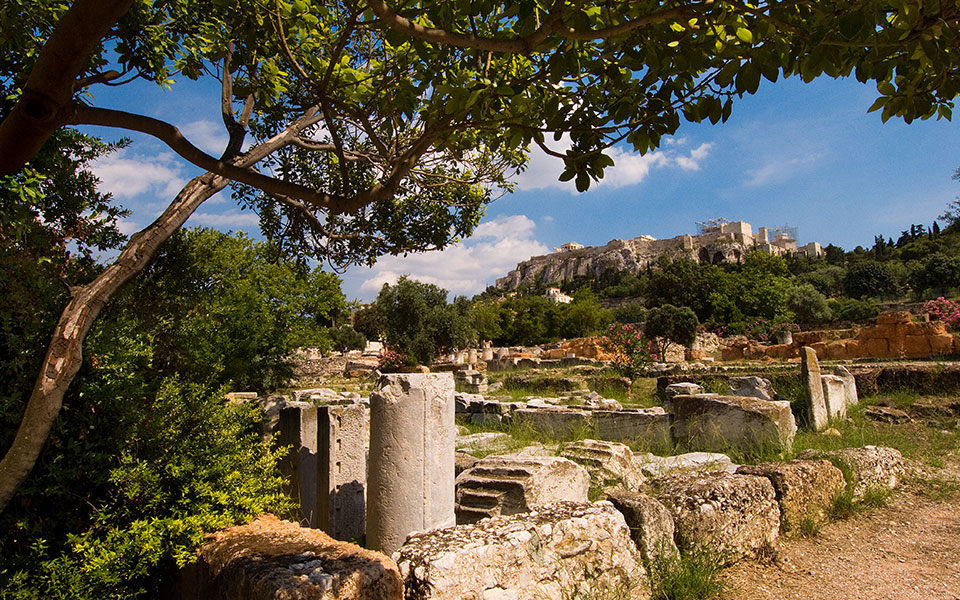
BOULEUTERION
Among the key civic buildings that lined the west side of the Athenian Agora, the Bouleuterion was the most important, representing the beating heart of Athenian democracy. Here, the Council of 500 – with 50 members from each of the ten Attic tribes – met to vet and prepare state business before presenting it to the popular assembly (Ekklesia), which convened every ten days. The Council was established in 507 BC by the democratic reformer Cleisthenes. The Old Bouleuterion (now beneath the Metroon) was built c. 500 BC, while the adjacent New Bouleuterion dates to the late 5th c. BC.
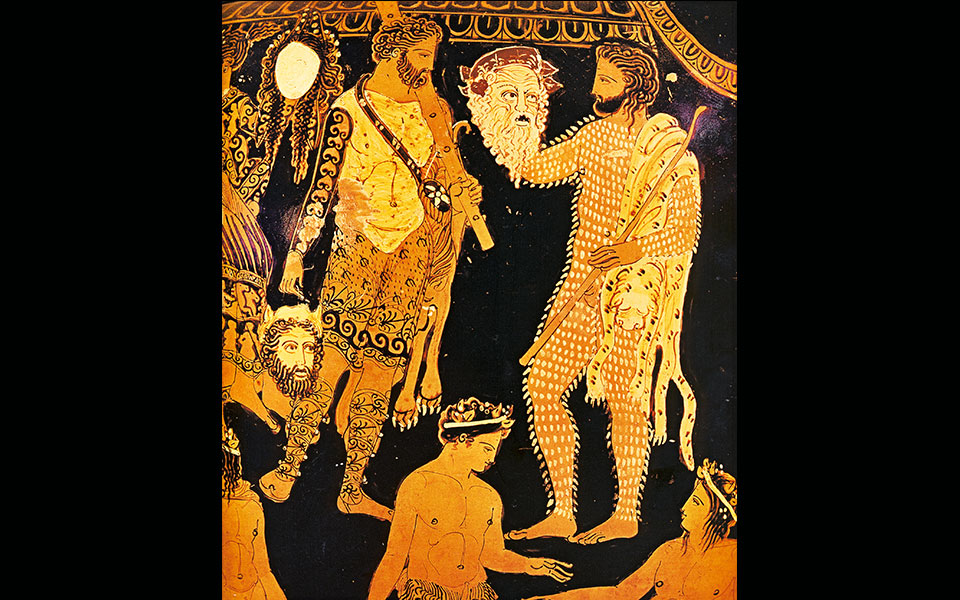
THEATER OF DIONYSUS
On the South Slope of the Acropolis, the Theater of Dionysus was the first permanent home of drama, where, from the early 5th c. BC, Athenians and outside visitors from all walks of life gathered to watch tragedies and comedies that dealt with not only the Greeks’ rich mythical and religious background, but also the daily frustrations and humorous machinations of the Western world’s earliest experiment in democratic government. Here, Aristophanes and other comedic playwrights often poked fun at Athenian leaders – including the populist Cleon, whose demagogic approach, some 2,500 years later, is being so entertainingly emulated by today’s politicians
[Actors after a satirical play, detail from a red-figure krater of Pronomos,
(late 5th century BC, National Archeological Museum, Naples)]
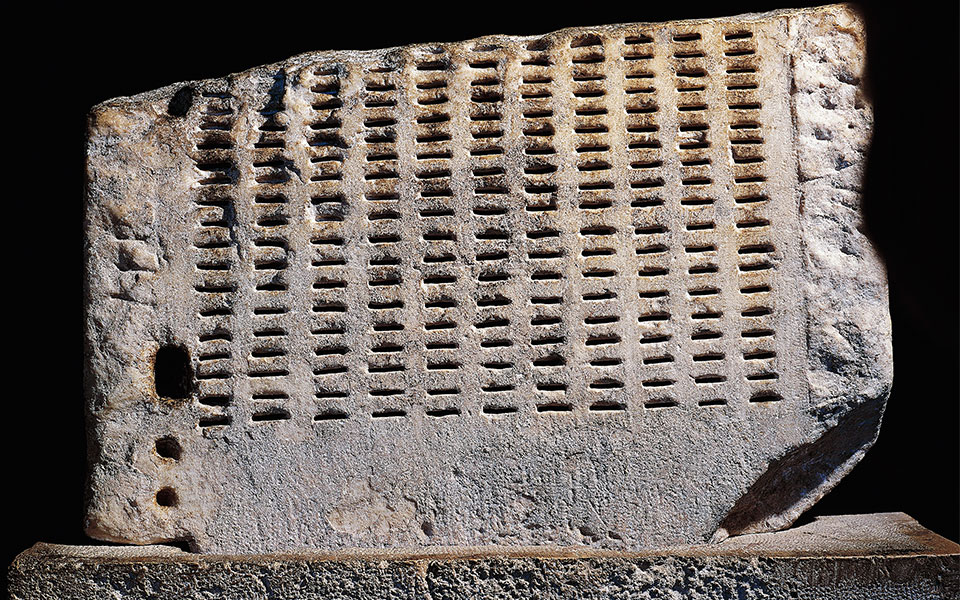
KLEROTERION
Particularly characteristic of ancient Athenian democracy were its courts, composed of at least 201 male jurors selected from the citizenry of Athens. To form juries fairly and reduce the chance of corruption, a device called a kleroterion was used to select jurors randomly from the ten Attic tribes, immediately prior to a trial. Bronze tickets bearing prospective jurors’ names, the first letters of their fathers’ names and their demes, were chosen randomly from baskets and placed in the device’s slots, then selected (or not) using a system of white (Yes) and black (No) balls that dropped arbitrarily through a tube.
[3rd c. BC kleroterion, Museum of the Ancient Agora, Athens]
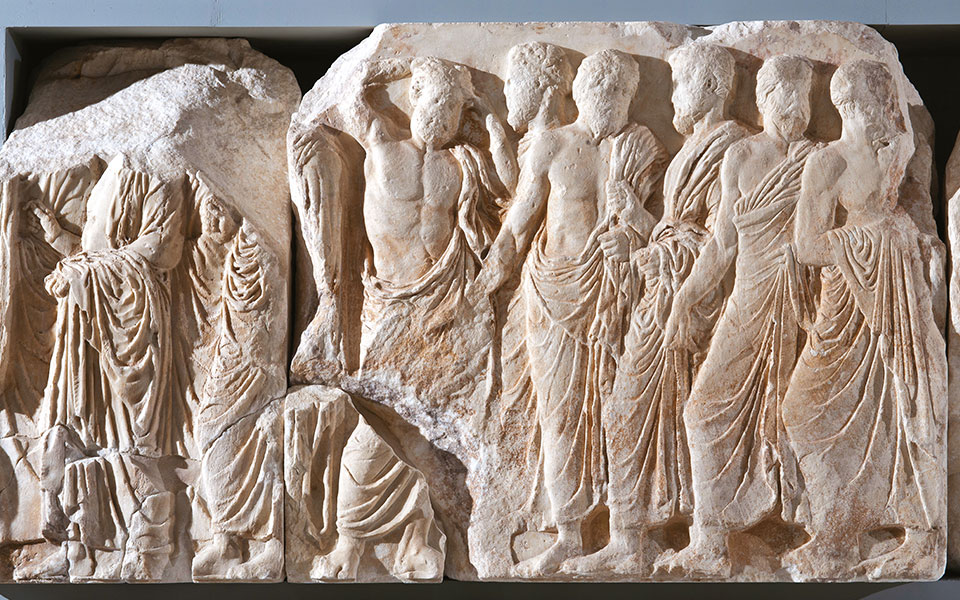
THE PARTHENON
Ostensibly the greatest temple ever built for Athena, patron goddess of ancient Athens, the Parthenon was also a sculpture gallery whose exterior Ionic-style frieze and carved metopes carried meaningful messages aimed at the ancient city’s populace, visitors and opponents. Erected after the Greeks’ defeat of the Persians, at the height of Pericles’ democratic reforms, the Parthenon exalted the Greeks’ – particularly the Athenians’ – military strength and the triumph of Good over Evil and Order over Chaos as depicted in the various struggles and victories captured in its metopes. The frieze’s horsemen and numerous female figures may allude to recent strengthening of women’s civic rights and the democratization of the knighthood.
[Officials of the Athenian state during the procession of the Festival of the Panathenaia. From the northern frieze of the Parthenon (Acropolis Museum, Athens)]
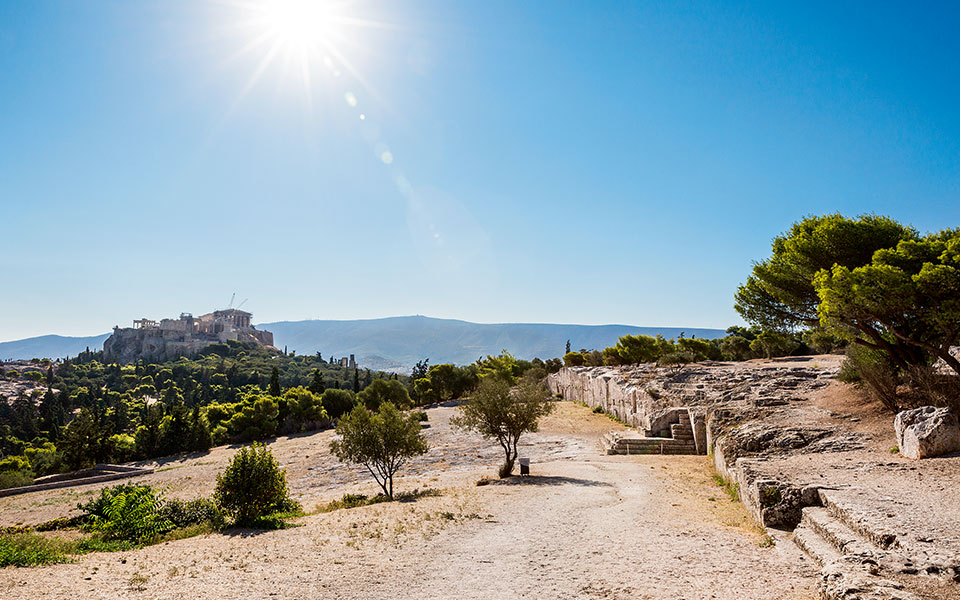
THE EKKLESIA
The open-air amphitheater on the Pnyx Hill was the meeting place of ancient Athens’ popular assembly. Athenian democracy called for new legislation and decrees to be prepared first by the council (Boule) in the Agora, then brought to the Pnyx for a final decision by the people, determined with a show of hands and a simple majority. In Pericles’ time, the citizens faced the city; ca. 404 BC, a new bema (speakers’ podium) was erected on the opposite side and the audience’s orientation was reversed. Great orators heard here included Demosthenes, who railed against the rising Macedonian imperialism of Philip II.
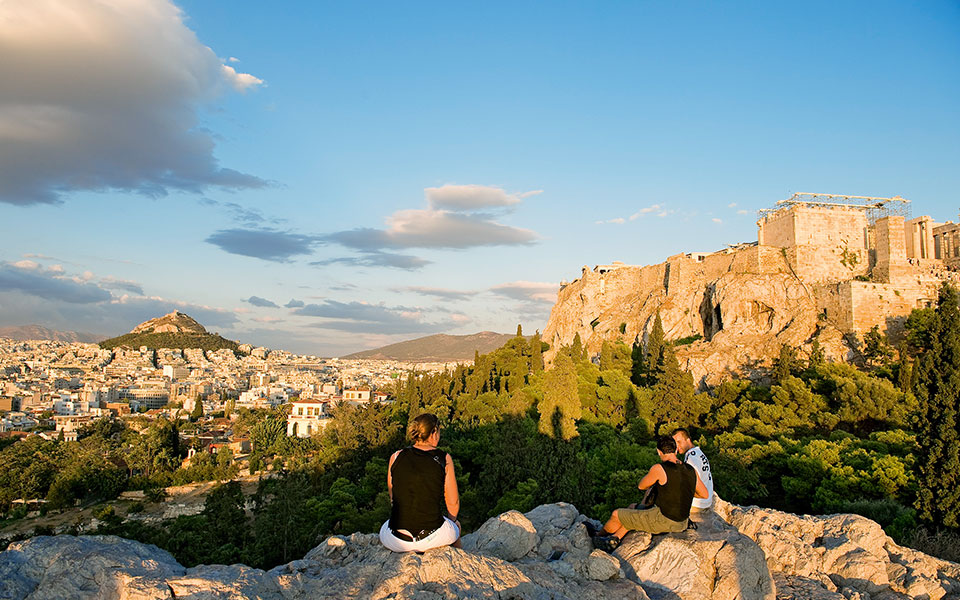
AREOPAGUS HILL AND COURT
The prominent rock west of the Acropolis, the Areopagus Hill, was home to the Areopagus Council, Athens’ original central governing body that long pre-dated democracy. In the 5th and 4th c. BC, it acted like a present-day supreme court and special prosecutor’s office, handling intentional homicide and other important cases, conducting its own investigations, and assisting in times of crisis. It served as a check on the Assembly and thus safeguarded democracy at the highest level. The members of this highly respected supreme court were ex-archons (similar to former senators), carefully vetted by other top leaders and selected for life.
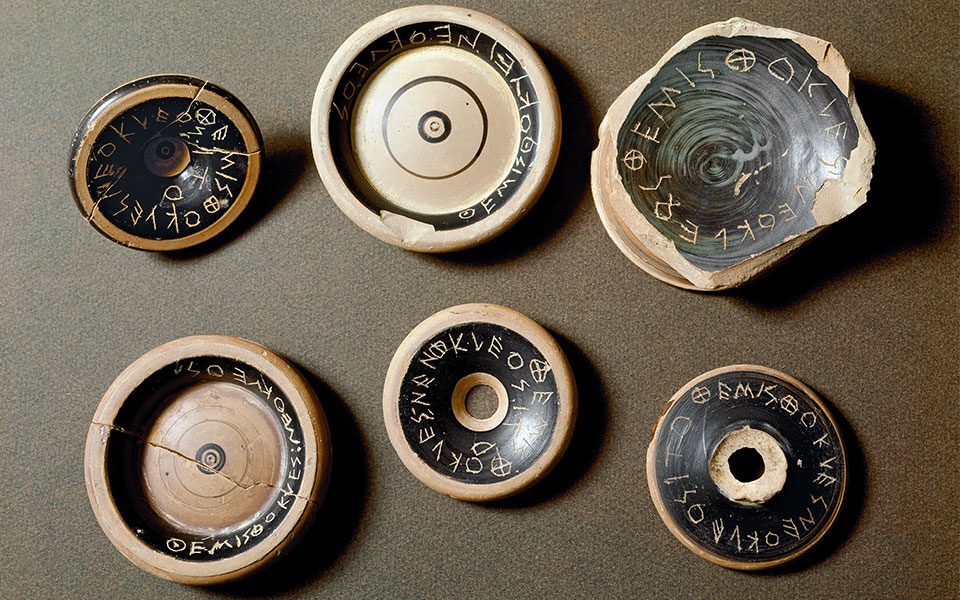
OSTRACA
A powerful tool in the democratic system of ancient Athens was the practice of ostracism, through which a leader or other influential figure deemed a threat to the state could be banished from the city for ten years. Citizens voted for such exile by scratching the name of their nominee on a potsherd or ostracon, a ubiquitous form of rubbish in a pre-plastic era when most ordinary containers were made of clay. Ostraca discovered dumped in the Agora and the Kerameikos after ostracism votes have revealed the names of some of Athens’ most prominent figures, including Themistocles, Pericles and Kimon.
[Ostraca, Museum of the Ancient Agora]
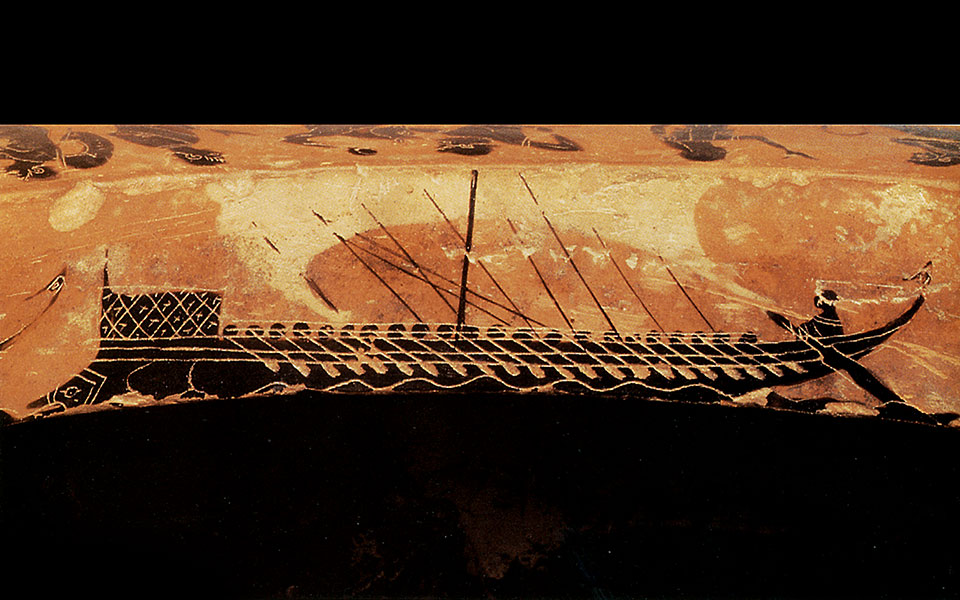
AN ANCIENT SHIP
Ancient Athenian democracy took root and flourished largely thanks to the power of its navy, spearheaded by triremes – light, fast attack ships, propelled by three banks of rowers, which could ram and “hole” enemy ships, putting them out of action or sending them down to the watery depths of Poseidon’s realm, the ancient equivalent of Davy Jones’ Locker. Athens reinforced its democratic ideals, even as it headed the Delian League and later promoted its own increasingly imperialistic goals, by requiring its citizens, both rich and poor, to serve shoulder to shoulder as rowers, essentially stress-bonding them into a unified force.
[Penteconter (50-oared) warship. Detail from the interior of an attic black-figure dinos (550-530 BC, Louvre Museum, Paris)]

KRITIOS BOY
Athens’ evolving social and political character in the late 6th and early 5th centuries BC is reflected in the statue of the Kritios Boy, in the Acropolis Museum, carved sometime after 480 BC in a transitional Archaic-to-Classical form termed the Severe Style. This Athenian youth (ephebos) seems to reveal an increasing emphasis on idealism, wherein the individual is less important than the whole, just as Athenian citizens were coming to devote themselves more selflessly to their democratic state. Gone is the “Archaic Smile,” while the body is more natural, relaxed, with its weight successfully shown resting on one leg.










